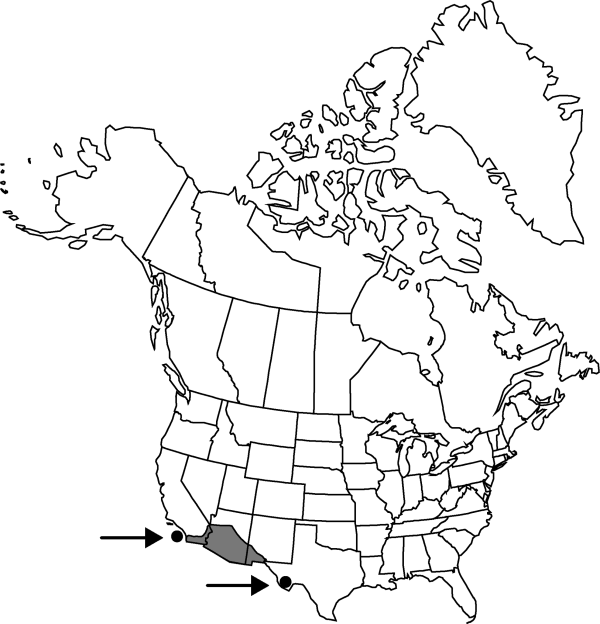Difference between revisions of "Boerhavia coulteri var. palmeri"
Sida 20: 153. 2002.
FNA>Volume Importer |
imported>Volume Importer |
||
| (One intermediate revision by the same user not shown) | |||
| Line 52: | Line 52: | ||
|publication year=2002 | |publication year=2002 | ||
|special status= | |special status= | ||
| − | |source xml=https:// | + | |source xml=https://bitbucket.org/aafc-mbb/fna-data-curation/src/2e0870ddd59836b60bcf96646a41e87ea5a5943a/coarse_grained_fna_xml/V4/V4_43.xml |
|genus=Boerhavia | |genus=Boerhavia | ||
|species=Boerhavia coulteri | |species=Boerhavia coulteri | ||
Latest revision as of 21:58, 5 November 2020
Stems 2–7(–15) dm. Leaf blades 15–40 × 10–30 mm. Flowers: pedicel 0.1–1.1 mm; bracts at base of perianth usually 1; perianth 0.7–1 mm distal to constriction; stamens (1–)2, included or barely exserted. Inflorescences terminal clusters, axis 15–55 mm. Fruits 4–17 per cluster, usually remotely spaced, overlapped 1–50% (sometimes more) of their lengths, occasionally ± paired (rarely in 3s), straw colored to pale red-brown, narrowly obovoid, 2–2.4+ × 0.8–1.1 mm (l/w: [1.9–]2.1–3), apex rounded; ribs obtuse or rounded-obtuse, at most slightly rugose near sulci; sulci 0.1–0.3 times as wide as base of ribs, smooth.
Phenology: Flowering mid summer–early fall.
Habitat: Sandy or rocky soils in deserts or arid grasslands
Elevation: [0-]300-1200 m
Distribution

Ariz., Calif., N.Mex., Tex., Mexico (Baja California, Baja California Sur, Sonora).
Discussion
Boerhavia coulteri var. palmeri is a desert taxon primarily from south of the Mogollon Rim; its occurrence in southern New Mexico and western Texas, and on the Channel Islands, is perhaps the result of introductions. It seems very closely related to B. torreyana, distinguished by the less rugose ribs and narrower, nonpapillate sulci. The two may intergrade in southeastern Arizona. For decades var. palmeri has been included without taxonomic recognition within a broadly constructed B. coulteri. The latter is usually a more robust taxon with densely fruited inflorescences and more or less truncate fruits. The two are often sympatric, either in mixed populations, or with B. coulteri var. palmeri inhabiting nearby slightly drier sites. Though most specimens are easily placed into one variety or the other, the two intergrade and hybridization is likely.
Selected References
None.